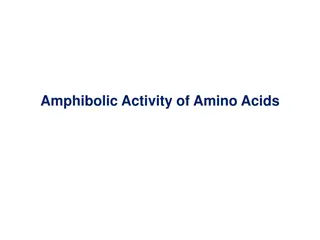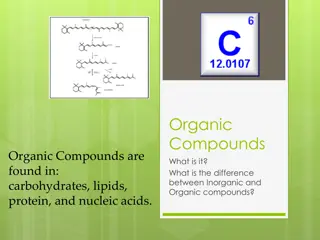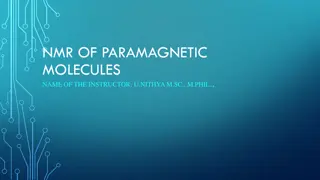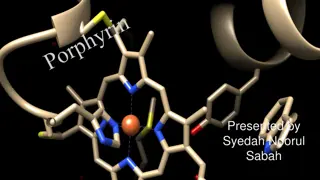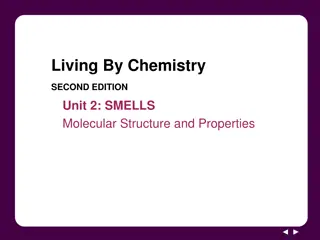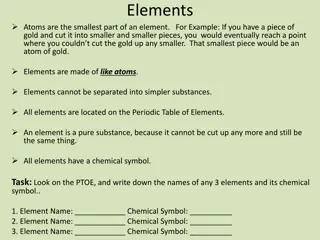Understanding the Compounds of Life: Biological Molecules and Their Functions
Biological molecules are essential in living organisms, providing structure, energy, and genetic information. Proteins, composed of amino acids, play a crucial role in the human body. Enzymes act as catalysts to speed up chemical reactions, while carbohydrates serve as a source of energy in cells. Learn more about the functions and importance of these compounds in life.
Download Presentation

Please find below an Image/Link to download the presentation.
The content on the website is provided AS IS for your information and personal use only. It may not be sold, licensed, or shared on other websites without obtaining consent from the author. Download presentation by click this link. If you encounter any issues during the download, it is possible that the publisher has removed the file from their server.
E N D
Presentation Transcript
CHAPTER 3.3 Compounds of Life
Biological Molecules A biological molecule is a large organic molecule in any living organism. 1. Determine the structure and function of different body parts 2. Provide energy 3. Genetic information
Proteins A protein is a biological polymer made of amino acid monomers. An amino acid is a carbon compound that contains two functional groups - amino and carboxyl
Amino-Acid Chains 1. Amino acids (AA) link together and form long chains. Proteins and the Human Body 1. Proteins are important to the human body a. 20 different AA
Enzymes 1. Helps chemical reactions in cells speed up. 2. Made of O & H 3. Enzymes break down large food molecules into smaller ones that can get into a cell. 4. Each type of enzyme has a unique shape.
What are Enzymes - How Do They Work? http://amzn.to/1sLTdbY Enzymes are biological catalysts, mainly proteins, generated by an organism to speed up chemical reactions. They have an active site on which the substrate is attached, and then broken up or joined. You can find more about Enzymes products from health designs website. You can even join health designs referral program to make money online: http://www.healthdesigns.com/referral-program
Carbohydrates A carbohydrate is a group of organic molecules that includes sugars, starches, and cellulose. Carbohydrates are natural polymers that contain C, H, and O atoms. THEY ARE A SOURCE OF ENERGY IN CELLS.
Sugars 1. Contain 5 or 6 C atoms 2. Simple sugars (glucose & fructose) 3. Formed in rings or straight chains a. Broken down easily b. Quick energy
Starch and Cellulose 1. Provide energy for long periods of time 2. Made up of complex carbohydrates a.Takes a long time to break down 3. Body cannot break down cellulose.
Nucleic Acids A biological polymer that stores and transmits genetic information is a nucleic acid 1. Genetic information - instructions for cells on how to make proteins, produce new cells, and transfer genetic information.
DNA Deoxyribonucleic Acid-DNA 1. Twisted ladder a. 5 carbon sugar deoxyribose b. Sugar and Phosphates make up the side c. Nitrogen bases A- adenine cytosine G guanine T- thymine C-
RNA Ribonucleic Acid - RNA 1. Single strand a. 5 carbon sugar ribose b. Nitrogen bases A - adenine guanine U- uracil C-cytosine G-
2. DNA provides information to make RNA. 3. RNA makes the proteins that a cell needs to function.
Lipids A lipid molecule is a long hydrocarbon chain with a carboxyl group on the end. A lipid is a type of biological molecule that includes fats, oils, hormones, waxes, and components of cellular membranes.
Saturated and Unsaturated Lipids Saturated lipids contain only single bonds. Unsaturated lipids contain at least one double bond. polyunsaturated
1. Two functions of lipids a. storing energy b. make up cell membranes Control what enters and leaves individual cells.




